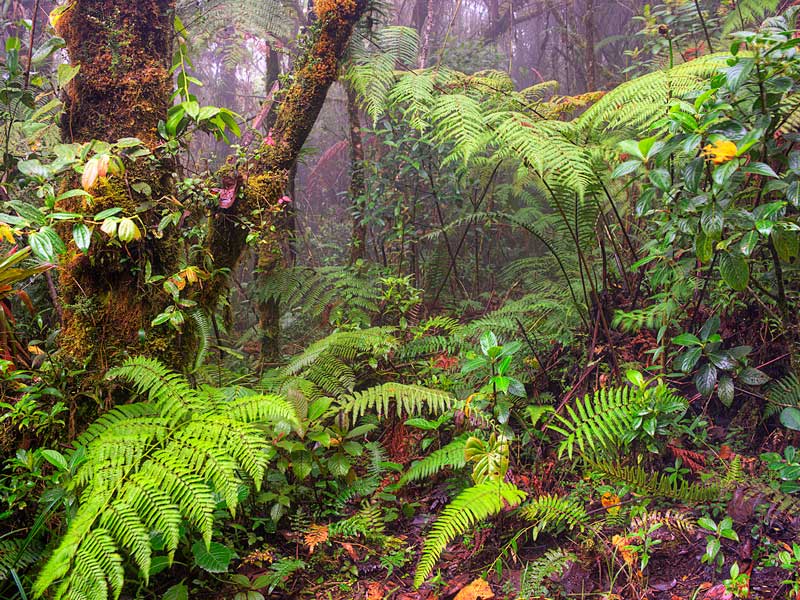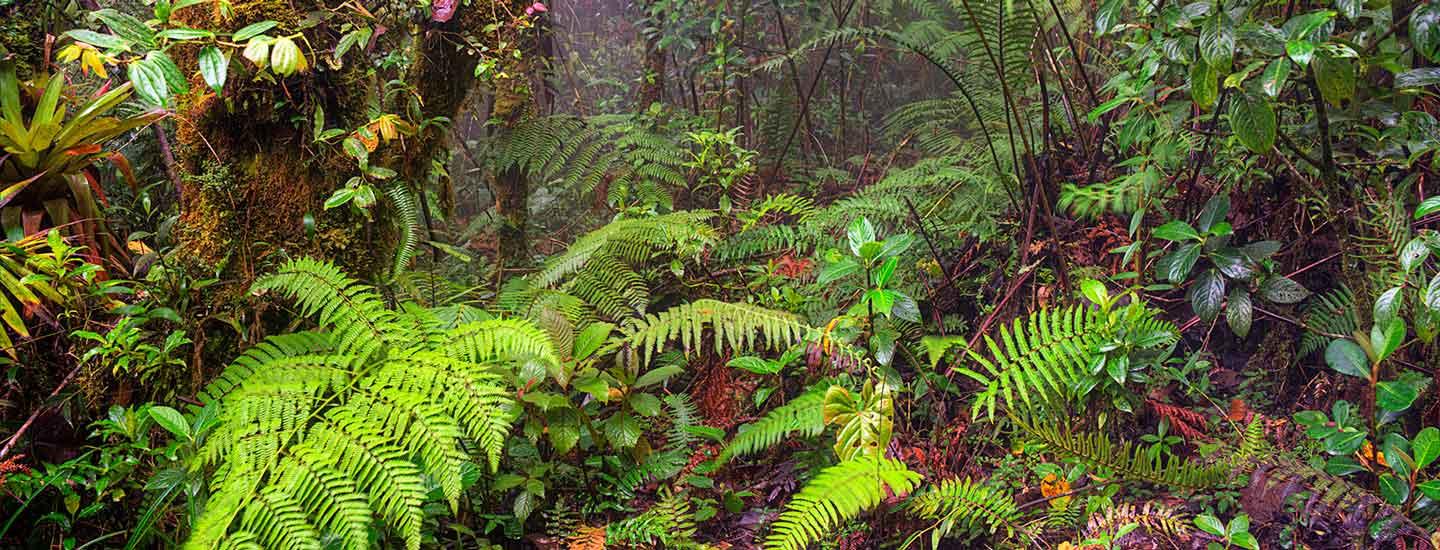The interesting thing about this park is that, in addition to being the country’s largest protected area, it is also the only binational park. This means that its territory is shared with the neighboring country of Panama, which is why it is called “Amistad” or “friendship”. As an international park, its wealth is shared between both countries, who also work together to conserve biodiversity and natural resources.

One of the characteristics that makes the park noteworthy is that visitors to the park come into contact with a pristine natural environment in which biodiversity is on display in all its forms. Places like this make it possible for Costa Rica to be considered one of the most biodiverse regions on the planet, with some of the greatest diversity in terms of genetics, species and ecosystems, as well as a high level of endemism.
It is known for the majestic trees of its oak forests and cloud forests as well as páramo plains and alpine wetlands such as turberas, or peatlands. It is home to a network of short, medium and long trails, which can be a window into the species richness of the area, with several species that are endemic to Talamanca.
The park covers an area of 199,147 ha in Costa Rica and 207,000 in Panama. Thanks to its natural and cultural value, the park has been recognized both here and internationally: in 1982, UNESCO declared it the core area of the La Amistad Biosphere Reserve. UNESCO designated it a World Heritage Site in 1983 due to the significant importance and diversity of the ecosystems it protects.
Another aspect of the park is its closeness to the adjacent rural and indigenous communities, where visitors can easily find guides, lodging and board, and contribute to local development through Rural Community Tourism. You can also enjoy impressive views from majestic peaks, stunning sunrises and sunsets, and a tapestry of an agricultural landscape with a clean sky full of stars.
Services:
- Drinking water
- Electricity at the Altamira Biological Station and de Pittier Operational Post
- Campgrounds
- Lunch area
- Restrooms
- A network of trails for day hikes from 2 km to 27.5 km
- Lookouts
- Local tourism guides
- Porters for equipment and materials
You can coordinate complementary services with neighboring communities outside the park, including lodging, sale of food, porters for materials and equipment. They can also be coordinated directly through the organized groups with which ACLA-P has signed use permits.
Don’t forget!
- There are four sectors by which visitors can enter the park: Santa María de Pittier, Altamira de Biolley, Tres Colinas de Potrero Grande and Santa María de Brunca, with access via official trails established in the zoning component of the PILA Management Plan.
- Depending on the sector you visit, you can enter the PILA for one to five days.
- Trails and the infrastructure installed have a maximum capacity, so prior reservations are necessary.
Hours of operation:
- Seven days a week from 8:00 a.m. to 4:00 p.m.
- Please call for reservations during hours of operation.
Rates:
- Admission (per day)
- Costa Rican nationals and residents: ₡800 (+IVA) for residents and ₡500 (+IVA) for children
- Non-residents: $10 (+IVA) for adults and $5 (+IVA) for children
- Camping (per night)
- Costa Rican nationals, residents and non-residents: $6 (+IVA)
Reservations:
- Tel: (506) 22005355, Altamira Biological Station.
Information:
- Tel: 22005675, Pittier Biological Station and/or via e-mail: reservaciones.pila@sinac.go.cr





